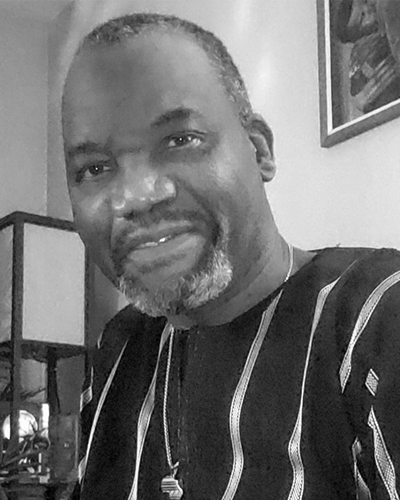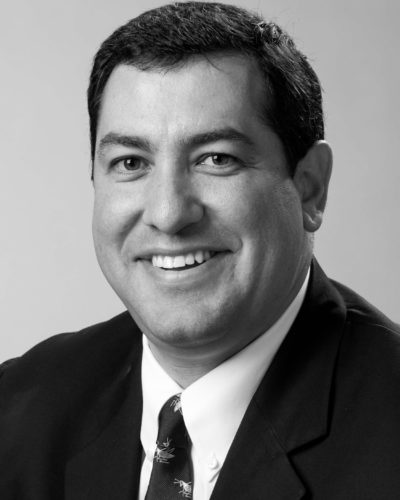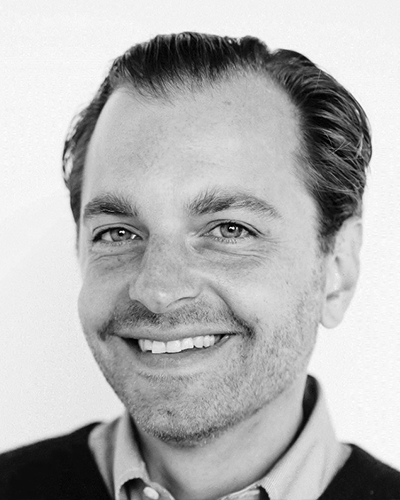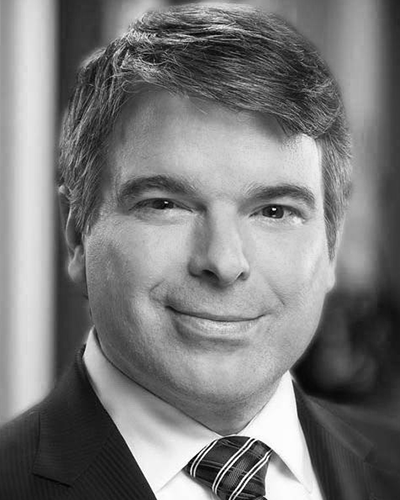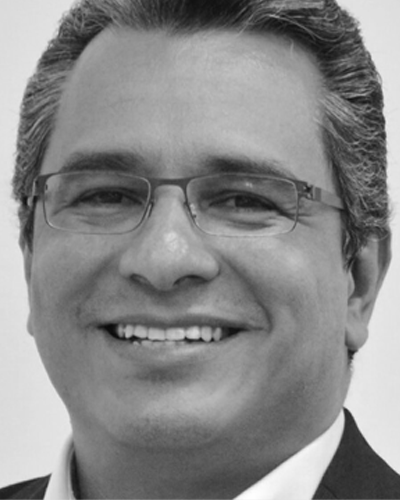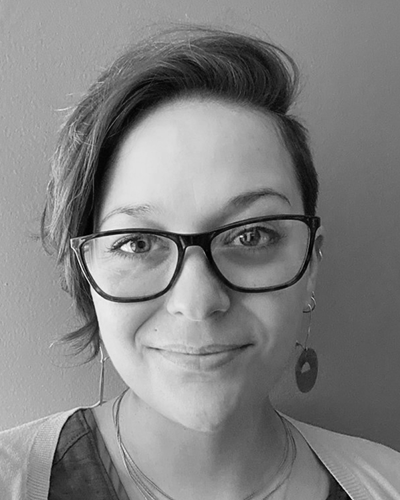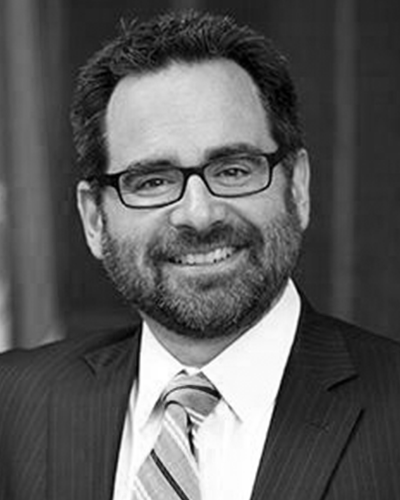Transcript:
James Lawler: [00:00:00] Welcome to Climate Now, a podcast that explores and explains the ideas, technologies, and the practical on the ground solutions that we’ll need to address the global climate crisis and achieve a Net-Zero future. I’m James Lawler, and if you like this episode, please leave us a review wherever you get your podcasts.
Share this episode with your friends, or tell us what you think at contact@climatenow.com. We really love to hear from our listeners. This episode was made possible by a number of organizations that supported Climate Now’s Net-Zero City series of conversations in the fall of 2022. Those organizations were BlocPower, which is a Brooklyn-based climate technology company greening American cities.
Any interested home and building owners should fill out a few brief questions about their property at upgrade.blocpower.io to see if they’re eligible and to schedule a call with a representative. If you’re a municipal or utility leader, you can reach out to BlocPower through their website, [00:01:00] blocpower.io/partner-with-blocpower.
This episode also received support from the Yale Center for Business and the Environment, their 10-month certificate program on financing and deploying clean energy trains working professionals to accelerate the deployment of clean energy worldwide. Through this program, participants can connect with Yale expertise, grow their professional networks, and deepen their impact toward a clean economy.
It’s a great program, and in fact, one of our main guests today was a graduate of that program. Finally, the episode was supported by the Connecticut Green Bank, mobilizing money for clean energy and creating jobs in Connecticut while reducing the energy burden for Connecticut families, businesses, and nonprofits.Check out Connecticut Green Bank. They’re doing a ton of interesting things in the state of Connecticut.
Now, today’s episode is about how cities can achieve net-zero emissions, and it’s based on a series of events, which Climate Now held in 2022 in partnership with the Future of Small Cities Institute.
We will have two more episodes that pull from those conversations we had. So stay tuned for more episodes on how you finance a net-zero transition in a city [00:02:00] and how to think about developing the necessary workforce to do so. The inspiration for the series of conversations that Climate Now conducted last year was the example of Ithaca, New York, a town of 30,000 people in the Finger Lakes region of the state.
In 2019, the town adopted its own Green New Deal. An ambitious plan to address climate change, economic inequality, and racial injustice. Our goal was to explore how Ithaca’s trying to achieve net-zero emissions and identify a key learnings that could support other cities in their paths to net-zero. The person originally hired by Ithaca to fulfill that vision was Dr. Luis Aguirre-Torres, who served as the city of Ithaca’s, director of sustainability until late 2022. Prior to assuming his post in Ithaca, Luis spent a dozen years helping Latin American countries develop climate change legislation sponsored by the US State Department. In this episode, we combine highlights from my one-on-one conversation with Luis about the strategy in Ithaca with clips from our panelists across that event series, whom we will introduce along the way.
But first, our news [00:03:00] segment, “This Week in Climate News.”
This week in Climate News, I’m joined by Dina Cappiello from RMI and Julio Friedmann. Welcome Julio and Dina.
Dina Cappiello: Great to be here, James. So research by Kingsville Bond at RMI and and actually backed up by the BP Energy Outlook, this week, shows signs that we have reached a plateau. It’s a peak, but a plateau at the same time for a bunch of fossil fuels.
OECD demand for fossil fuels peaked in ‘ 07. Coal demand globally in 2013. Industrial demand for fossil fuels as energy peaked in 2014, an industrial combustion engine car demand peaked in 2017.
Julio Friedmann: For OECD…
Dina Cappiello: Yes, correct. The global south is obviously the big issue, and that was raised in the BP Outlook as well for predominantly natural gas.
Julio Friedmann: Right. My initial thought here is that is a really Eurocentric view, [00:04:00] that we are still seeing growing coal demand in many countries. We are still seeing global coal demand growing. We are seeing the same thing with petroleum. We are seeing the same thing with natural gas.
I understand that the sort of fractional plateau is like upon us and we’re going to see much slower growth rates and we will eventually have demand destruction and we will eventually displace fossil. But I don’t quite think we’re there yet. And even independent of the Russia-Ukraine conflict, that has reminded us what happens when things change suddenly, I’m looking chiefly at China of which is the huge source of fossil energy demand for everything: for cement, for steel, for cars, for power, for all these things. If they have a cold winter, if they run out of hydropower, if they suddenly Xi Jinping [00:05:00] decides that Xi Jinping thought means more coal, like, there’s a lot of things that can change here.
So it’s an important note and an important milestone, but I don’t think it’s judicious to declare peak anything quite yet.
James Lawler: Mm-hmm. Julio, you flagged an article in the FT entitled “Indonesia Islanders File Climate Lawsuit Against Swiss Cement Group Holcim.”
Julio Friedmann: Yeah. It’s an interesting case because Holcim is in a particular Swiss Canton, they are bound by that law. And the Indonesians decided that they would pursue legal redress in that court because Holcim has contributed 0.42% of all historical greenhouse gas emissions. They said that whatever the damages are to their way of life, whatever the total cost of that is, Holcim should pay 0.42% of that.
That’s actually a interesting legal [00:06:00] conceit. I think that level of precision is questionable. But you sue in the jurisdiction where you’re able to have redress and this case is going forward on that basis. Frankly, I don’t have a clear vision one way or another, but I wonder whether this is the feather edge of an avalanche of lawsuits that shuts down progress, or whether this is the real driving force that brings a bunch of people to the table.
And reasonable people can disagree, but it’s a really noteworthy case and probably not the last.
James Lawler: Mm-hmm. The article also mentions another lawsuit that was brought by a Peruvian farmer and mountain guide against RWE over that company, which is a German energy suppliers contribution to climate change as well.
Julio Friedmann: Right. And that follows on the original Chevron lawsuit from years ago in which, again, native people were [00:07:00] suing Chevron in California and US courts based on damages in their country. In that case, the damages were more straightforward. It was much easier to link the damages from oil and gas production in Ecuador than it is to draw a clear line here.
That’s why the fractional attribution is kind of interesting.
James Lawler: Right. So there is also some pretty significant news about an EU green deal.
Dina Cappiello: Yeah, I mean, this is huge. I think it’s a really big deal and I also think it’s really indicative, and this is something that, that we talked about at Davos, but of when… this is gonna be a very American centric view, so I apologize, as an American, but, but..of what happens when the United States steps up and we pass something like the Inflation Reduction Act, which is obviously the largest climate investment in our history. And this is, you know, the analysis from our, our experts [00:08:00] here is that this is, you know, the EU following suit.
And I just think it’s an amazing development in such a short period of time, um, after IRA, and we’ll see what happens. I haven’t gotten into the details. Julio, you may know this better, but how it compares. I know there are some real limits where ours is more of an investment, but I do think that this is the start of some momentum.
Julio Friedmann: I certainly agree with that. This is a big deal. And it is a step in the right direction and it’s a credible counter gambit to what the US and other nations are doing. They didn’t mention the US in their press release, but they sure mentioned China, and they have in the back of their minds, nations like Japan and Korea that have had long standing industrial policy that brings them into this arena.
There are a couple of provisions that I thought were super noteworthy. One of them is they basically said, ‘we’re gonna fast track financing.’ In Europe, that is an astonishingly big deal. There will be a whole bunch of people who are upset by that, but that’s [00:09:00] good. Similarly, I most liked and most appreciated the labor provisions.
They said they’re gonna do a lot of skilled labor training. That’s fantastic cuz you’ve heard me say this before. I’ve always worried about the human capital dimension to the energy transition. There are some fixed provisions around things like hydrogen that are good. And the commission is allowing member states flexibility in what they choose.
James Lawler: So as part of this legislation, the EU is offering a premium to green hydrogen producers to try to compete with US hydrogen tax credits, which I, as we know, I think amount to basically $3 per kilogram of hydrogen with a fully decarbonized supply chain. If you, if you have that, you can get quite a lucrative subsidy on hydrogen production. And so the EU is trying to do something similar.
Julio Friedmann: Yeah, so the US system is quite different. So it is a tax credit that is based on carbon intensity. And if you are clean enough to get $3 a kilogram, you get $3 a kilogram. Very [00:10:00] clear, very compelling. In the EU, they’re doing something a little different. It is also keyed to the carbon index, which is as it should be. It’s colorblind, which is welcome, but they’re doing it through an auction process. They’re putting 800 million euros on the block and saying whoever comes in, we’re doing a reverse auction. You can buy stuff for the cheapest value. That’s probably gonna work quite well because the volumes that the EU is talking about initially are gonna be pretty small.
One last thing about it that’s noteworthy, it’s guaranteed 10 years. It’s not an annual process. Whoever gets here will have a 10 year fixed price that they will receive that they can finance against. That’s noteworthy.
James Lawler: Now for a special episode about what it takes to decarbonize a city using Ithaca, New York as a case study.
What’s involved to switching thousands of homes in buildings to carbon free electricity? How can a city with a budget of just 90 million achieve that goal? And how do you do this in a way that doesn’t leave behind low [00:11:00] income residents? These are just some of the questions we’ll address in the episode.
We’ll begin with Dr. Luis Aguirre-Torres, who estimates that the City of Ithaca generates some 400,000 tons of CO2-equivalent each year.
Luis Aguirre-Torres: People working in the climate space think about climate change in a very different way. And I am of the camp where we believe that climate change is strictly an economic issue.
It has negative externalities that manifest in environmental or social issues, but at the end of the day, we’re talking about our economy, the economic model that is the one that is leading us to to use energy in a particular way, and that energy comes with emissions and therefore our whole economic activities related to the amount of emissions that we have.
People have been studying this for many years. Okay? If, if I am really thinking of this from an economic perspective, the first thing that I need to to look at is what is the energy intensity? That is once the amount of energy that we use, either energy from fuels like gasoline or diesel, and the amount of energy that we use from, from natural gas or the amount of energy we use from electricity, you can more or less understand the amount of energy [00:12:00] that we use in the city. And because we know what the GDP for the city is, we can more or less estimate how much energy you need for every unit of GDP. And then based on that, I had an idea of the relationship that we had between energy use and economic production. Then I started looking at the emissions that we have in relation to energy, in terms of carbon emissions per unit of energy.
You know, what is it that we have in the city? I realized that what we needed to do was to reduce energy intensity by 50%. And it, it is not exactly equivalent to energy efficiency, but you know, it is a very close concept, right? So if we were to reduce energy intensity by 50% and then we were to reduce the amount of carbon in every unit of energy by 90%, then we’ll be talking about reducing emissions as a total probably by 80%. So that was the beginning of my thinking.
James Lawler: Luis says, an estimated 40% of emissions come from transportation, mostly from miles driven, which is harder to control. However, another [00:13:00] 40% of emissions are tied to Ithaca’s buildings, about 80% of which date back before 1940. In that case, you can do things like improve insulation, replace drafty windows, and install energy efficient heat pumps to reduce building energy consumption.
Luis Aguirre-Torres: When you start thinking about reducing energy intensity, which in some cases is similar to an efficiency, you can think about… where can you be more efficient? So you start thinking about appliances, you start thinking about like what Rewiring America calls the billion machines that we have out there that are highly inefficient. For example, if you think about the natural gas furnace that you have at home, it very likely is 30, 40% efficiency. Even though the nameplate may tell you that it’s like much higher than that. The reality is that they very likely are like 30% efficiency. So the problem that you have is 70% energy loss. So it’s waste energy that you need to eliminate, right? So if you are gonna maximize, you need to go where most of the energy waste is. And that is in buildings, that’s where [00:14:00] you use natural gas. With vehicles, you know, you have the same issue. An internal combustion engine vehicle has a 40% efficiency if lucky.
So when you think about. Then those are the areas that you need to tackle. So you need to electrify, but at the same time, the best way of reducing emission is by not using anything that generates emissions.
James Lawler: In the case of decarbonizing more than 6,000 buildings, the city pledged not to leave anyone behind as it planned to modernize and electrify its built environment.
That’s according to Rebecca Evans, who now serves as the acting director of sustainability for the City of Ithaca. Here she is at our first panel event at the Soil Factory in Ithaca.
Rebecca Evans: I think the most important element worth mentioning is that everything that we do goes through this lens of justice. So it’s not that we’re developing programs or developing initiatives and then, ‘oh, we forgot about the poor people.’
We’re actually applying that lens throughout the entire process. So throughout the development of a program and through the implementation… [00:15:00] actual financial investment in these communities that can push them forward and provide opportunity, which is really what the Green New Deal is providing – opportunity.
So we decided on 65% of the entire Green New Deal budget, which would mean any outside investment in the Green New Deal needs to service climate justice communities based on our definition. And then we are going for 50% of the city’s capital project budget, which when we looked at it, and I did kind of a cursory glance of how the budget was allocated, it was about 12% that could potentially be going to disadvantaged communities.
And most of the projects, I think it was somewhere in the 76% range, was actually going to deferred maintenance. So like filling potholes. And when I think capital project, I think of something that really should be servicing our communities. That wasn’t it. That was ultimately our proposal, and we’ll see where it goes from here.
James Lawler: One key social justice [00:16:00] aspect in the Ithaca model is equitable jobs development. Dr. Aigbokhan Aloja Airewele is the coordinator at the Green Energy Workforce Training Center at Cornell Cooperative Extension in Ithaca. He explains how organizations in the region are pulling their efforts to train a workforce with the skills required to support this new green economy.
Aigbokhan Aloja Airewele: The conversation around workforce development has come about because of a number of entities within the community that decided to come, in a collaborative manner, to train people with skills to actually engage in the work that will be needed for these electrification projects, whether it’s tighten up the, the house envelope, or actually installing the energy efficient appliances, all of that.
But there have been many attempts in the past, a lot of money poured in to bring people into the workforce. And what I discovered was that it was actually a way for the government to take people off the welfare role and say, ‘be gone.’ So the [00:17:00] entities that came together wanted to maximize their efforts so we can stop competing with one another for some of these grants that we have to write, but actually focus on our lane. the workforce that is needed for this giant effort is not 35. We’re talking thousands of people, 3000 or so. And if we are not going to outsource this, which again will create inequities that we’ve been trying to correct, we needed to give people within this region, especially in the county and the city, the skills, the knowledge to be involved in the work, but also to understand why they do this.
But when you have people with different experiences, people who have worked before, owned their businesses, lost their businesses, people who’ve never been employed… When they’re in a training program, they’re given the knowledge and also given opportunities for employment connection and support, which is how we frame the career pathways objectives, is that we want to bring people in 18 and above people who [00:18:00] can work, receive skills to make sure they can explore, within this green economy, a sustainable career.
James Lawler: To execute the building decarbonization project, Ithaca turned to BlocPower, a Brooklyn-based climate tech startup focused on greening aging urban buildings since 2014. The company has completed energy projects such as installing energy efficient heat pumps in more than 1200 buildings, prioritizing low and moderate income communities.
In one of our panels, Cullen Kasunic, project finance officer at BlocPower explains how the Ithaca decarbonization project can drive down costs through economies of scale.
Cullen Kasunic: It’s bringing a community together, bringing a group of people together for bulk buying, for bulk education, so that you could go into a place and leverage a lot of contractors, talk to manufacturers and say, ‘hey, look, we’re gonna bring you 6,000 buildings of heat pumps, right?’
And that could be 10,000 heat pumps. That could be 20,000 heat pumps, right? Because some multi-family buildings, commercial buildings, they [00:19:00] need a lot of them. And in doing that, you get scale and you drive down cost. And so splitting things up this way I think has enabled us to take the problem and pick it apart so that we can really address it.
And this is actually what we did is we did an inventory and we used data from Cornell and we used data from Oak Ridge National Laboratory, and we used data that we gathered over the years, right? It’s a lot of what we’ve done at BlocPower has built this sort of building data set, and we looked at the buildings in the city to say, ‘okay, where are the technical opportunities?’And then we compared that to where are the right motivational opportunities, and we started to develop a set of folks who have a good opportunity to upgrade their building, and then we can develop a scope of work and it starts with a draft scope of work. At BlocPower, we figured out a way to be able to come up with a good estimate without having to go onsite.
So that’s another thing that helps with scale: the more buildings you do, the more you can understand without having to actually send people to the site just to figure out if someone even wants anything. [00:20:00] We look at, uh, what’s their heating system like? What is their building envelope like? Right? How well is it insulated?
How well is it sealed up? Do they have other interests, like maybe an electric car in the future? Do they have an opportunity for solar? And really to put all of this together… and with that, we can then have a real opportunity in front of somebody that says, okay, here’s a scope that we think will make sense for you.
Replacing old systems is an important part of the value, especially when those old systems are dirty, and the older a fossil fuel system gets, the more pollution it makes. Right? The less efficient it is. And so by bringing all of that together, there’s these community benefits, right. Also at the property, you can allow people to just get a better quality of life with these type of systems. So we really try to bring all of that together in this, in this scope. And then the conversation happens and then, and then we build the project. And if it’s good, it becomes a showpiece.
James Lawler: And in Ithaca, that is literally what BlocPower is doing. Using its data set [00:21:00] to go block by block to convince building owners how and why they should make these updates to their buildings. At this point, you may be wondering who pays for all this. Luis estimated that it would cost up to 450 million to do the building decarbonization project. That’s not a bill the city or its residents can afford, certainly not on an individual basis. But the combined building stock is an asset the community can leverage to not only get better prices on heat pumps and other equipment and services, such as Colin described, but to attract bigger investment. In another panel discussion hosted by Climate Now and Future of Small Cities Institute in Troy, New York, Luis briefly describes how this idea evolved.
Luis Aguirre-Torres: We realized that we were talking about a new asset class. We were talking about something that was risky. So the fact that we’re trying to do each building individually meant each one of these gonna be treated differently as a different investment. But what if we were to do the whole city? So what we did was, through an RFP, we promoted industry consolidation. The city was not accepting single company bids. It was consortiums and we [00:22:00] promoted sophistication by saying the city’s electrifying every single building, we increase economic sophistication.
We start getting phone calls from every single heat pump manufacturer because we were… think about it…we’re gonna replace about a hundred thousand machines in the city. So that was a huge opportunity. And for us, you know, 400,000 metric tons of CO2 was a problem. But for investors, that focus on removing emissions, it was a huge investment opportunity. All of those factors combined the the last bit, the scale. By doing this as a whole, it opened the opportunity for aggregation, the risking of a portfolio, programmatic financing, and then eventually the securitization that would allow us to continue with other decarbonization projects.
James Lawler: This is where organizations like the Kresge Foundation and its 4 billion endowment come in. Joe Evans is portfolio director and social investment officer for the foundation’s social investment practice. He explains how the private philanthropic organization assumes a portion of the risk so that banks, insurance companies and investors are more likely to come forward with the capital for these projects.
Joe Evans: [00:23:00] One way that we attract banks, insurance companies, and other capital providers into these things that we care about is by de-risking for them. And the way we de-risk, Luis mentions building a portfolio and securitizing it. For the tool that I used or that Kresge used in this instance was a partial guarantee.
So we made, we provided BlocPower with a 10% guarantee, and that a first loss of money. This is a tool that we use a lot. Where we’ll say, ‘okay, you think it’s really risky, we don’t think it’s that risky. How much credit enhancement do you need to get through your box, your underwriting, your decision making about how risky it is?’
So we provided a guarantee that would cover the 10% of the first losses. We started with a 30 million credit facility. That is designed already to scale up to I think 80 something million. And again, this is for the, the air source heat pump part. So it’s not the entire 450 million budget that Luis mentioned.
But so if there are [00:24:00] losses, if BlocPower gets to the point where they’re not able to pay the creditors and it’s Goldman Sachs and Microsoft are the two investors in this transaction, if BlocPower’s unable to sort of meet its debt, then they can draw on the Kresge guarantee and the 10% is a, you know, it’s a pretty significant, sometimes we go higher depending on the case.
But with this kind of work, the numbers work. If you do the modeling for solar, for air source heat pumps, for energy retrofitting work, especially when you combine more than one of those together, the numbers work. The customers will always prioritize paying those bills because if they don’t pay those bills, then after, you know, 90 days, 120 days, they’re gonna lose access to the technology.
They’re still gonna need electricity. A lot of times our partners too are also kind of believers and, and wanna do the work, but they have to go convince their credit committees, their, their decision makers and their large organizations. And having some kind of credit support, [00:25:00] credit enhancement first loss money helps them get over that.
James Lawler: This means that the individual building owners from all socioeconomic corners of Ithaca who choose to work with BlocPower to decarbonize their properties, can tap into low interest loan and leasing options. These financing plans often come at a cost that is offset by the energy savings. That’s according to Cullen.
Cullen Kasunic: So what we do at BlocPower two is we really look at all the incentives that are out there. We look at the financing sources. We’ve partnered a lot with Luis on foundations and other organizations that may support the lower income communities are the ones that are in climate justice areas that may suffer from various things like flooding that may occur as we have more climate issues.
But when we present a project, the building owner has the opportunity to purchase it with cash. They may have and some people do, or to finance it with whatever source they may have. So maybe they’re going to do a home equity loan or refinance their building, or they can utilize a program that we put together that’s 15 years.
And it can be no money down. [00:26:00] And the benefit here is because it’s 15 years, we’re able to stretch the payments out such that the savings are able to cover a lot of those payments. Sometimes they can cover all of the payments, and in doing that right, you get the savings to help you purchase this unit because there are savings, right?
There’s other benefits, but there are savings, and those savings help you purchase the unit. The lower monthly payment makes it bearable and affordable. Really folks of all types, and we’ve spent a lot of time making sure that our financing is available to really anybody. Right? So we have ways to deal with folks with low credit. We have ways to deal with folks with low income. We have ways to work with commercial clients and nonprofit and everything like this.
James Lawler: While Ithaca is forging its own way to become carbon neutral, it is not alone. The state of Connecticut, for example, is also helping cities decarbonize through innovative policies and financing facilitated by the Connecticut Green Bank.
About 10 years ago, the legislator there created the nation’s first state [00:27:00] level green bank. Green banks are designed to accelerate the transition to clean energy and fight climate change rather than maximize profit. At the Yale School of the Environment, we had two panelists explain how this financial model works.
Dr. Rob Klee is a lecturer at the Yale School of the Environment and former commissioner for the Connecticut Department of Energy and Environmental Protection, and Bryan Garcia is the president and CEO of the Connecticut Green Bank. First up is Dr. Klee, who reflects on why the green bank model works in Connecticut.
Robert Klee: We had a, a positive policy environment that ended up creating our green bank, recognized the importance of finance in deploying clean energy at scale. Connecticut is not California. We’re not New York. We know that. We’re also not gonna be investing in like the r&d and the, the new tech side of things.
But what we could figure out, and we do have this sort of wonderful connection in lots of our state to capital markets to financing sort of [00:28:00] professionals. That’s some of our wheelhouse here. So we could find things that are nice Connecticut scale and policies like the creation of a green bank and that connection between state government and municipal government and things like a property assessed clean energy program where we needed our state to pass that over our chain law. We needed municipalities to raise their hand and sign up, and then we needed our local banking institutions willing to allow their primary mortgages to become secondary for those clean energy improvements. And Bryan had those conversations with our local financial institutions about how a property that is investing in clean energy is a property that is going to be improving and having more capital freed up to expand their business to become an another client of you, the bank. And we can have those conversations where there is a state actor, a entity like the green. The private, you know, [00:29:00] financiers all coming together in the same direction. In spirit,
James Lawler: Bryan joins the conversation to describe how the Connecticut Green Bank helps make public money work for climate change.
Bryan Garcia: So in Connecticut, the challenge was to figure out a way for the Green Bank to engage our local community banks and credit unions so that they could provide the loans to families so that we can support our comprehensive energy strategy. Our comprehensive energy strategy was about efficient windows, insulation, solar on the rooftops, like everything you could think about that was Energy Star in appliance and you know, more efficient. The challenge was that if you’re doing those measures that have long useful lives and are expensive was how do you get your local credit unions to move beyond a five year unsecured loan to do something that was 10, 15, 20 years so that the monthly payments that a homeowner is paying is actually cheaper than the energy savings they’re getting back.
You, you want the homeowner to have more [00:30:00] economic benefit after they take out a loan to finance a clean energy improvement. We ended up providing to our local community banks and credit unions a second loss, which is to say they, they can take the first one and a half percent of losses on an unsecured loan.
They do that every day. They underwrite to that. Rather than say, we’ll take that first loss, we take the next seven and a half percent of losses. We looked at all the data. All the data told us people pay their energy bills. So over the last almost 10 years, they’ve lent out 110 million. We’ve only had to pay $300,000 in losses. So we’re using somebody else’s money to help us achieve our policy objectives.
James Lawler: Today we explored how one city is tackling the climate crisis, as well as some of the innovative financial models that have emerged to help finance the shift to greener technologies without leaving anyone behind, but progress won’t be perfect.
Luis resigned from his position last year with the City of Ithaca, citing pushback from his colleagues over the direction of the Ithaca Green New Deal as one of the primary reasons. Rapid change is [00:31:00] never easy.
We are excited to announce that Climate Now will continue to hold more conversations about decarbonizing cities in 2023. Climate Now, with its partners and sponsors, is launching more net-zero cities events. Each net-zero city event will provide a platform to foster relationships between building owners and vendors, community groups, project developers, investors, and policy makers to focus on the issues that matter most for each city to achieve a net-zero future.
Would you like to have a net-zero city event in your city? You can reach out at info.climatenow.com/netzerocities. That’s it for this episode of the podcast. For more episodes, videos, or to sign up for our newsletter, visit climatenow.com. We hope you’ll join us for our next conversation.
Climate Now is made possible in part by our science partners like the Livermore Lab Foundation. The Livermore Lab Foundation supports climate research and carbon cleanup initiatives at the [00:32:00] Lawrence Livermore National Lab, which is a Department of Energy applied science and research facility. More information on the foundation’s climate work can be found at livermorelabfoundation.org.
